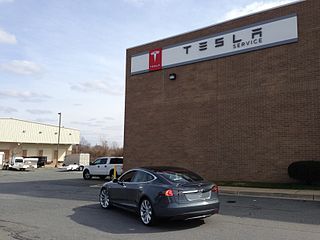Morgan Stanley: Tesla Motors Is World’s Most Important Automaker

Perhaps we should let this serve as a reminder that things can change very quickly in our world of transportation — and energy. The great research companies publish reports predicting the future based on the past, and tell us, for example, that we’ll still be burning coal in the year 2050. Of course, these are the same people whose $5000-a-copy reports told us that the telephone companies would have thriving land-line businesses in perpetuity.
They just don’t see bold new ideas coming to the fore, and hitting tipping points that totally change the world in very short periods of time. They’re not to be blamed; no one can.

Craig,
I think you are giving too little credit to the analysts here. For every one exception that you find – where a technology becomes disruptive and quickly changes everything…. there are literally tens of thousands of cases where the technology does NOT become disruptive and does NOT result in a paradigm shift.
For the example of us still burning coal in 50 years… recognizing what must take place in order for that not to be the case is more important than quibbling over the exact timelines. In order for us to have moved beyond coal in only 50 years, the average home and business must become radically more efficient, and there must be a ~20-fold increase in renewable power generation.
For both generation and efficiency, you need proper incentives and you need to facilitate the investment itself. If we had subsidies that clearly made efficiency upgrades and distributed renewable power investments a net bargain even after the inclusion of interest on financed projects… then administered a national loan program (similar to student loans) that would finance efficiency upgrades or renewable power investments provided that they save more in current power bills than payment on the loan…. Then you’d have a disruptive condition, and everything could change…. But that presents a moving target. Once solar increases its generation by an order of magnitude (to ~2% fo the total energy generated in the U.S.), there will be no critical peak hours which drive up the price of electricity, and the overall electricity prices would drop.. then you’d have stagnation until further subsidies are proposed. This would create a boom/bust cycle for the industry which everyone would hate… So instead you’d have to have a significant enough subsidy that there would be no threat of the renewable power sector ever being undercut by falling power prices…
I’m just not optimistic that this is going to happen. I don’t see anyone on either side of the aisle fighting for such a program… Instead, the fight is all about squeezing the fossil power industry so that electricity is priced into a realm where renewable energy can compete – but this has two very negative side effects: 1) It significantly handicaps U.S. manufacturing in the world marketplace, and 2) it sucks all of the money out of people’s personal budget and savings, so that they can no longer make the efficiency and renewable energy investments you want them to make – even if it would save them money.
I think we have to have a paradigm shift in our policy discussions before we could ever hope for a transformation of our energy profile.
FWIW, I would support a simple subsidy for any project that applies for the subsidy – be it a home or business efficiency upgrade, a distributed or utility renewable power generator, or a fossil power infrastructure investment that serves to clean its emissions or increase its efficiency. I would make the subsidy such that it would equal the offset externality costs for all of the fossil emissions that the project would mitigate over the first 5 years, based on a yet-to-be-determined accommodation cost for all appropriate emissions (CO2 ~$20/ton, SO2 ~$300/ton, NOx ~$400/ton, soot ~$1000/ton, Pb ~$50/kg, As ~$50/kg, Cd ~$80/kg, carbon black microparticles ~$80/kg,,Hg ~$5/g, etc… These numbers are in some cases just half-informed guesses and not in any way to be taken as what the subsidy should be based on). I would then allow financing based on the expected longevity of the project to be made through the federal government based on bonds issued by the treasury and paid back through payments to the IRS.
But whatever the final numbers are, if the local power grid is such that better insulating your house would result in the reduction of 40 tons-CO2, 1 ton-SO2, 500 kg- NOx, 80 kg – soot, 5 kg- Pb, 4 kg – As, 2 kg – Cd, 1 kg carbon black microparticles, and 5 g – Hg over 5 years, then you should get $2095 in subsidies for re-insulating your house… Society would be net neutral for the first 5 years of your installation, and then would gain in mitigated externalities for the remaining lifetime of the project… and the homeowner could borrow the money for insulating the house (which wouldn’t be much after subsidies) for 10 years at ~3% interest.
In the same vein, however, the old coal plant down the road that wanted to upgrade its boilers and put in hefty smokestack scrubbers could use the exact same calculations to determine its subsidy for upgrading – and thereby reduce the effective calculated gain for everyone in its region when considering their plans for distributed generation or efficiency improvement…
That would work VERY well, but no one is championing such a thing except me… It still wouldn’t close the gap and get us out of coal in 50 years, but it would get us closer than any other option proposed, and it would insure the remaining coal is as clean as possible.
BTW, It’s good to be back.
🙂